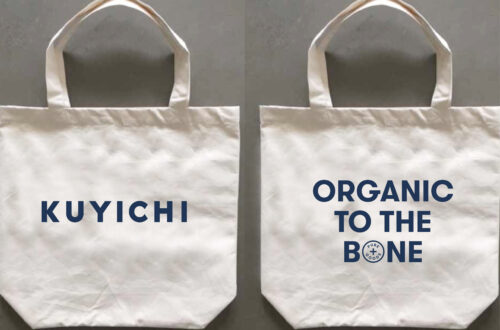The fashion industry, ever dynamic and responsive to societal shifts, is poised for significant transformations in the coming years. As we stand at the cusp of a new era, several key trends and shifts are anticipated to reshape the landscape of fashion. Let’s delve into the factors that will drive the evolution of the fashion industry and define the trends that will shape our closets in the future.
Sustainability Takes Center Stage
The fashion industry, historically synonymous with excess and environmental strain, is experiencing a seismic shift towards sustainability. This evolution is not merely a trend but a fundamental reorientation of practices to align with eco-friendly principles. Consumers are becoming increasingly conscientious about the environmental impact of their clothing choices. The demand for transparency in the production process and the use of sustainable materials is reshaping the industry’s landscape. Brands are under pressure to adopt green practices, from sourcing raw materials responsibly to implementing ethical manufacturing processes. The coming years will witness a significant uptick in sustainable fashion, marking a departure from the environmentally detrimental practices of the past.
Technology Integration for Personalized Experiences
The intersection of fashion and technology is a frontier that continues to expand, promising transformative experiences for consumers. Artificial intelligence (AI) and augmented reality (AR) are emerging as pivotal tools in reshaping the shopping journey. Virtual try-ons and personalized recommendations powered by AI algorithms are enhancing the online shopping experience. Additionally, AR is finding applications in interactive retail spaces, offering customers a unique and immersive engagement with fashion products. As technology continues to advance, we can anticipate a more seamless fusion of the digital and physical realms in the fashion landscape.
Inclusivity and Diversity Redefine Beauty Standards
The fashion industry is undergoing a profound shift in its approach to beauty standards. The call for inclusivity and diversity is reshaping the portrayal of beauty in advertisements, runways, and campaigns. Brands are recognizing the importance of representing individuals of all sizes, ages, ethnicities, and abilities. This shift is not merely a fleeting trend; it reflects a deeper cultural change where the celebration of diverse beauty is becoming a norm rather than an exception. The coming years will see a continued emphasis on inclusivity, challenging traditional norms and fostering a more accepting and representative fashion culture.
Rise of Digital Fashion and NFTs
The digital realm is exerting a growing influence on the fashion industry, introducing innovative concepts such as digital fashion and non-fungible tokens (NFTs). Digital fashion involves designing clothing specifically for the virtual space, blurring the lines between physical and digital wardrobes. NFTs, on the other hand, bring the concept of ownership and scarcity to the digital fashion domain. Unique and limited-edition digital fashion items, secured by blockchain technology, are becoming collectibles. This intersection of fashion and the digital world represents a paradigm shift with implications for creativity, ownership, and the very definition of ‘wearable.’
Fast Fashion Faces Scrutiny
The era of fast fashion, characterized by rapid production cycles and disposable garments, is facing heightened scrutiny. Consumers are becoming more conscious of the environmental and ethical repercussions of supporting fast fashion. This has led to a discernible shift towards slow fashion, emphasizing durable, timeless pieces and sustainable practices. The narrative is changing from quantity to quality, encouraging consumers to invest in pieces that endure both in style and substance. The impending years are likely to witness a recalibration of consumer values, challenging the dominance of fast fashion and promoting a more sustainable, considered approach to dressing.
Phygital Fashion Shows and Events
The traditional fashion show format is undergoing a metamorphosis with the advent of “phygital” experiences – a harmonious blend of the physical and digital realms. Virtual fashion shows, livestreamed events, and immersive online experiences are gaining prominence. This evolution isn’t just a response to global circumstances but a strategic adaptation to changing consumer preferences. The phygital approach not only enhances accessibility for a global audience but also caters to the digital inclinations of contemporary consumers. The fashion industry’s embrace of digital formats is indicative of a broader shift towards a more technologically integrated and accessible future.
Circular Fashion Economy Gains Traction
The imperative to address the ecological footprint of fashion has given rise to the adoption of circular fashion principles. The industry is increasingly recognizing the value of recycling, upcycling, and prolonging the lifespan of garments. Circular fashion involves a comprehensive approach to minimize waste, encompassing everything from sustainable sourcing to waste reduction in production processes. Renting and resale platforms are gaining popularity, offering consumers alternatives to conventional ownership. The rise of circular fashion signifies a departure from the linear ‘take, make, dispose’ model, heralding a more sustainable and responsible era for the fashion industry.
Fashion Education Embraces Innovation
The educational landscape for fashion professionals is evolving to meet the demands of a rapidly changing industry. Traditional fashion education is incorporating digital literacy, sustainability studies, and a heightened focus on technology. The objective is to equip future professionals with a diverse skill set that extends beyond design aesthetics. The coming years will witness a generation of fashion graduates well-versed in the intricacies of sustainability, capable of navigating the digital landscape, and attuned to the evolving dynamics of the industry. This transformation in education aligns with the broader industry shift towards a more multifaceted, technologically savvy, and sustainably conscious future.
Frequently Asked Questions
- How will technology impact the future shopping experience in the fashion industry?
The integration of technology is set to revolutionize how consumers interact with fashion, creating immersive and personalized shopping experiences through virtual try-ons, augmented reality, and AI-driven style recommendations. - What sustainability measures will the fashion industry adopt in the coming years?
With a growing emphasis on eco-conscious practices, the fashion industry is expected to increasingly embrace sustainable materials, ethical production processes, and circular fashion initiatives to minimize environmental impact. - How will digital platforms influence the marketing strategies of fashion brands?
The rise of social media, influencer marketing, and e-commerce platforms will reshape how fashion brands connect with their audience. Digital channels will become central in reaching consumers, fostering direct engagement, and driving online sales. - What role will inclusivity and diversity play in shaping the future of the fashion industry?
The industry is recognizing the importance of inclusivity and diversity, with a shift towards representing a broader range of body types, ethnicities, and backgrounds. This move towards authenticity reflects changing societal norms and consumer expectations.






